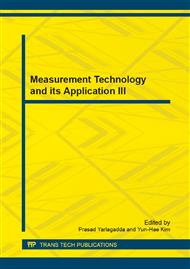p.1307
p.1312
p.1321
p.1326
p.1331
p.1336
p.1340
p.1345
p.1355
Complexity Evaluation Method of Electromagnetic Environment Oriented to Communication Equipment Based on Statistic Theory
Abstract:
To improve the objectivity and accuracy of evaluation for electromagnetic environment complexity and its influence on communication equipment, a subjective complexity evaluation method of electromagnetic environment oriented to the communication equipment is presented based on sensitivity and RF protection ratio of communication equipment. Based on statistical concept, the energy correlation factor is modified, and modulation and polarization correlation concept are imported into this method, by which the factor of energy correlation is modified and the subjective evaluation is made by analyzing the time domain correlation, frequency domain correlation, energy domain correlation, modulation correlation and polarization correlation of the electromagnetic environment. These simulation results indicate that communication equipment with various working parameters are influenced differently under the same electromagnetic environment. Namely, the complexities of electromagnetic environment for communication equipment with various working parameters are different.
Info:
Periodical:
Pages:
1331-1335
Citation:
Online since:
June 2014
Authors:
Price:
Сopyright:
© 2014 Trans Tech Publications Ltd. All Rights Reserved
Share:
Citation:


